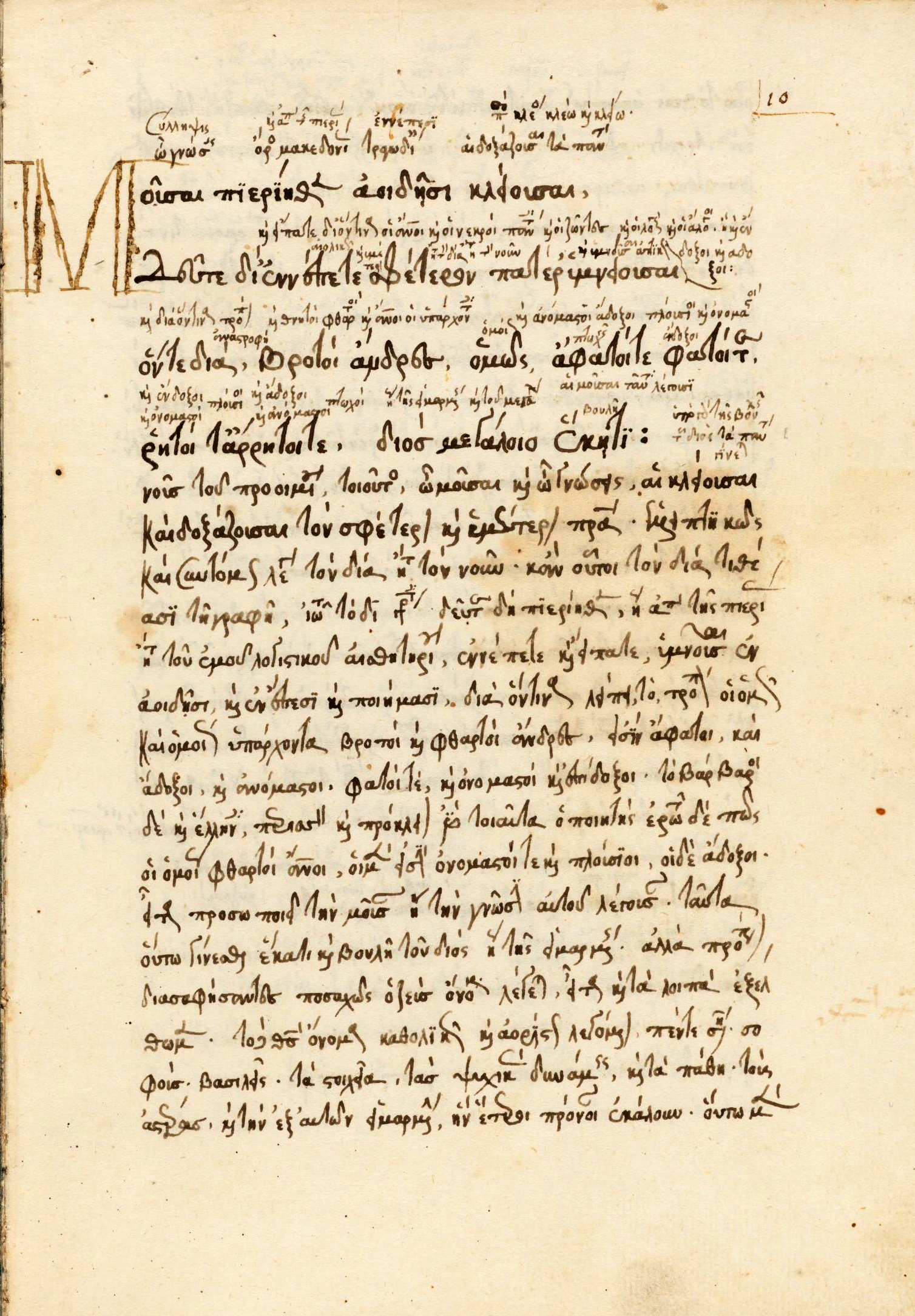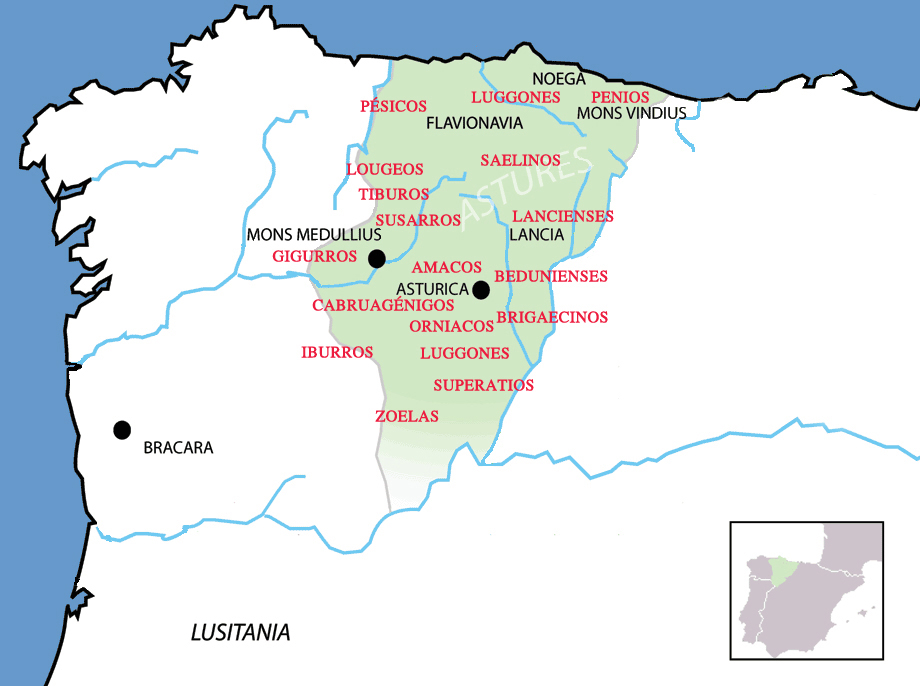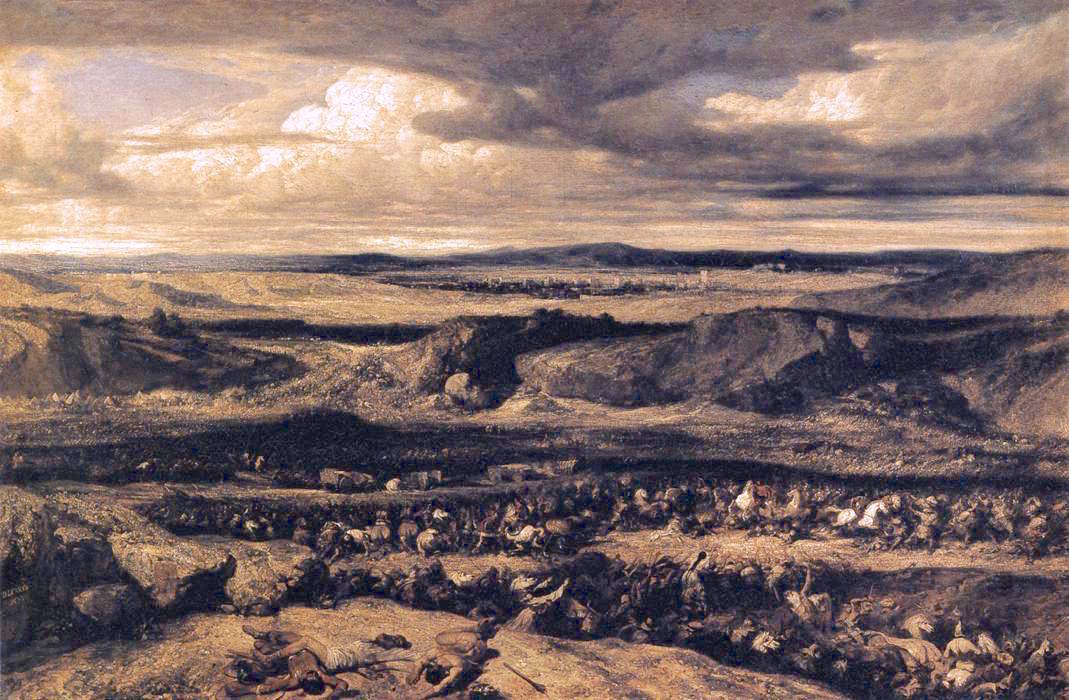|
Antonius Diogenes
Antonius Diogenes ( grc, Ἀντώνιος Διογένης) was the author of an ancient Greek romance entitled ''The Wonders Beyond Thule'' (Τὰ ὑπὲρ Θoύλην ἄπιστα ''Apista huper Thoulen''). Scholars have placed him in the 2nd century CE, but his age was unknown even to Photios, who wrote a synopsis of the romance. The romance was a novel of twenty-four books and was written in the form of a dialogue about travels. It is highly praised by Photios for its vivid narration, its clearness, and the gracefulness of its descriptions. Scholars have tended to take it as a given that Lucian of Samosata had Diogenes' work principally in mind when he wrote his celebrated parody, the '' Verae Historiae'' (''True Histories''), but J.R. Morgan has more recently questioned this accepted notion upon extensive comparative study of the two works. Summary of the novel in Photios The current knowledge of the novel's content is from Photios, who left a brief summary in his leng ... [...More Info...] [...Related Items...] OR: [Wikipedia] [Google] [Baidu] |
Ancient Greek Literature
Ancient Greek literature is literature written in the Ancient Greek language from the earliest texts until the time of the Byzantine Empire. The earliest surviving works of ancient Greek literature, dating back to the early Archaic period, are the two epic poems the ''Iliad'' and the ''Odyssey'', set in an idealized archaic past today identified as having some relation to the Mycenaean era. These two epics, along with the Homeric Hymns and the two poems of Hesiod, ''Theogony'' and ''Works and Days'', constituted the major foundations of the Greek literary tradition that would continue into the Classical, Hellenistic, and Roman periods. The lyric poets Sappho, Alcaeus, and Pindar were highly influential during the early development of the Greek poetic tradition. Aeschylus is the earliest Greek tragic playwright for whom any plays have survived complete. Sophocles is famous for his tragedies about Oedipus, particularly ''Oedipus the King'' and ''Antigone''. Euripides is known ... [...More Info...] [...Related Items...] OR: [Wikipedia] [Google] [Baidu] |
Faroe Islands
The Faroe Islands ( ), or simply the Faroes ( fo, Føroyar ; da, Færøerne ), are a North Atlantic island group and an autonomous territory of the Kingdom of Denmark. They are located north-northwest of Scotland, and about halfway between Norway ( away) and Iceland ( away). The islands form part of the Kingdom of Denmark, along with mainland Denmark and Greenland. The islands have a total area of about with a population of 54,000 as of June 2022. The terrain is rugged, and the subpolar oceanic climate (Cfc) is windy, wet, cloudy, and cool. Temperatures for such a northerly climate are moderated by the Gulf Stream, averaging above freezing throughout the year, and hovering around in summer and 5 °C (41 °F) in winter. The northerly latitude also results in perpetual civil twilight during summer nights and very short winter days. Between 1035 and 1814, the Faroe Islands were part of the Kingdom of Norway, which was in a personal union with Denmark from 1 ... [...More Info...] [...Related Items...] OR: [Wikipedia] [Google] [Baidu] |
Astur
The Astures or Asturs, also named Astyrs, were the Hispano-Celtic language, Hispano-Celtic inhabitants of the northwest area of Hispania that now comprises almost the entire modern autonomous community of Principality of Asturias, the modern province of León (province), León, and the northern part of the modern province of Zamora (province), Zamora (all in Spain), and eastern Trás-os-Montes e Alto Douro, Trás os Montes in Portugal. They were a horse-riding highland cattle-raising people who lived in circular huts of stone drywall construction. The Albiones were a major tribe from western Asturias. Isidore of Seville gave an etymology as coming from a ''river Asturia'', identified by David Magie with Órbigo River, Órbigo river in the plain of León, by others the modern Esla River, Esla river. Location The Asturian homeland encompassed the modern autonomous community of Asturias and the León (historical region), León, eastern Lugo (province), Lugo, Province of Ourense, Ore ... [...More Info...] [...Related Items...] OR: [Wikipedia] [Google] [Baidu] |
Aquitaine
Aquitaine ( , , ; oc, Aquitània ; eu, Akitania; Poitevin-Saintongeais: ''Aguiéne''), archaic Guyenne or Guienne ( oc, Guiana), is a historical region of southwestern France and a former administrative region of the country. Since 1 January 2016 it has been part of the region of Nouvelle-Aquitaine. It is situated in the southwest corner of Metropolitan France, along the Atlantic Ocean and the Pyrenees mountain range on the border with Spain, and for most of its written history Bordeaux has been a vital port and administrative center. It is composed of the five departments of Dordogne, Lot-et-Garonne, Pyrénées-Atlantiques, Landes and Gironde. Gallia Aquitania was established by the Romans in ancient times and in the Middle Ages, Aquitaine was a kingdom and a duchy, whose boundaries fluctuated considerably. History Ancient history There are traces of human settlement by prehistoric peoples, especially in the Périgord, but the earliest attested inhabitants in the south- ... [...More Info...] [...Related Items...] OR: [Wikipedia] [Google] [Baidu] |
Celts
The Celts (, see pronunciation for different usages) or Celtic peoples () are. "CELTS location: Greater Europe time period: Second millennium B.C.E. to present ancestry: Celtic a collection of Indo-European peoples. "The Celts, an ancient Indo-European people, reached the apogee of their influence and territorial expansion during the 4th century bc, extending across the length of Europe from Britain to Asia Minor."; . " e Celts, were Indo-Europeans, a fact that explains a certain compatibility between Celtic, Roman, and Germanic mythology."; . "The Celts and Germans were two Indo-European groups whose civilizations had some common characteristics."; . "Celts and Germans were of course derived from the same Indo-European stock."; . "Celt, also spelled Kelt, Latin Celta, plural Celtae, a member of an early Indo-European people who from the 2nd millennium bce to the 1st century bce spread over much of Europe."; in Europe and Anatolia, identified by their use of Celtic langua ... [...More Info...] [...Related Items...] OR: [Wikipedia] [Google] [Baidu] |
Iberia
The Iberian Peninsula (), ** * Aragonese and Occitan: ''Peninsula Iberica'' ** ** * french: Péninsule Ibérique * mwl, Península Eibérica * eu, Iberiar penintsula also known as Iberia, is a peninsula in southwestern Europe, defining the westernmost edge of Eurasia. It is principally divided between Spain and Portugal, comprising most of their territory, as well as a small area of Southern France, Andorra, and Gibraltar. With an area of approximately , and a population of roughly 53 million, it is the second largest European peninsula by area, after the Scandinavian Peninsula. Name Greek name The word ''Iberia'' is a noun adapted from the Latin word "Hiberia" originating in the Ancient Greek word Ἰβηρία ('), used by Greek geographers under the rule of the Roman Empire to refer to what is known today in English as the Iberian Peninsula. At that time, the name did not describe a single geographical entity or a distinct population; the same name was us ... [...More Info...] [...Related Items...] OR: [Wikipedia] [Google] [Baidu] |
Anaximander
Anaximander (; grc-gre, Ἀναξίμανδρος ''Anaximandros''; ) was a pre-Socratic Greek philosopher who lived in Miletus,"Anaximander" in ''Chambers's Encyclopædia''. London: George Newnes, 1961, Vol. 1, p. 403. a city of Ionia (in modern-day Turkey). He belonged to the Milesian school and learned the teachings of his master Thales. He succeeded Thales and became the second master of that school where he counted Anaximenes and, arguably, Pythagoras amongst his pupils. Little of his life and work is known today. According to available historical documents, he is the first philosopher known to have written down his studies, although only one fragment of his work remains. Fragmentary testimonies found in documents after his death provide a portrait of the man. Anaximander was an early proponent of science and tried to observe and explain different aspects of the universe, with a particular interest in its origins, claiming that nature is ruled by laws, just like human soc ... [...More Info...] [...Related Items...] OR: [Wikipedia] [Google] [Baidu] |
Samos
Samos (, also ; el, Σάμος ) is a Greek island in the eastern Aegean Sea, south of Chios, north of Patmos and the Dodecanese, and off the coast of western Turkey, from which it is separated by the -wide Mycale Strait. It is also a separate regional unit of the North Aegean region. In ancient times, Samos was an especially rich and powerful city-state, particularly known for its vineyards and wine production. It is home to Pythagoreion and the Heraion of Samos, a UNESCO World Heritage Site that includes the Eupalinian aqueduct, a marvel of ancient engineering. Samos is the birthplace of the Greek philosopher and mathematician Pythagoras, after whom the Pythagorean theorem is named, the philosophers Melissus of Samos and Epicurus, and the astronomer Aristarchus of Samos, the first known individual to propose that the Earth revolves around the sun. Samian wine was well known in antiquity and is still produced on the island. The island was governed by the semi-autonomous ... [...More Info...] [...Related Items...] OR: [Wikipedia] [Google] [Baidu] |
Pythagoras
Pythagoras of Samos ( grc, Πυθαγόρας ὁ Σάμιος, Pythagóras ho Sámios, Pythagoras the Samos, Samian, or simply ; in Ionian Greek; ) was an ancient Ionians, Ionian Ancient Greek philosophy, Greek philosopher and the eponymous founder of Pythagoreanism. His political and religious teachings were well known in Magna Graecia and influenced the philosophies of Plato, Aristotle, and, through them, the Western philosophy, West in general. Knowledge of his life is clouded by legend, but he appears to have been the son of Mnesarchus, a gem-engraver on the island of Samos. Modern scholars disagree regarding Pythagoras's education and influences, but they do agree that, around 530 BC, he travelled to Crotone, Croton in southern Italy, where he founded a school in which initiates were sworn to secrecy and lived a communal, asceticism, ascetic lifestyle. This lifestyle entailed a number of dietary prohibitions, traditionally said to have included vegetarianism, although m ... [...More Info...] [...Related Items...] OR: [Wikipedia] [Google] [Baidu] |
Cimbri
The Cimbri (Greek Κίμβροι, ''Kímbroi''; Latin ''Cimbri'') were an ancient tribe in Europe. Ancient authors described them variously as a Celtic people (or Gaulish), Germanic people, or even Cimmerian. Several ancient sources indicate that they lived in Jutland, which in some classical texts was called the Cimbrian peninsula. There is no direct evidence for the language they spoke, though some scholars argue that it must have been a Germanic language, while others argue that it must have been Celtic. Together with the Teutones and the Ambrones, they fought the Roman Republic between 113 and 101 BC during the Cimbrian War. The Cimbri were initially successful, particularly at the Battle of Arausio, in which a large Roman army was routed. They then raided large areas in Gaul and Hispania. In 101 BC, during an attempted invasion of the Italian peninsula, the Cimbri were decisively defeated at the Battle of Vercellae by Gaius Marius, and their king, Boiorix, was killed. So ... [...More Info...] [...Related Items...] OR: [Wikipedia] [Google] [Baidu] |
Etruscans
The Etruscan civilization () was developed by a people of Etruria in ancient Italy with a common language and culture who formed a federation of city-states. After conquering adjacent lands, its territory covered, at its greatest extent, roughly what is now Tuscany, western Umbria, and northern Lazio, as well as what are now the Po Valley, Emilia-Romagna, south-eastern Lombardy, southern Veneto, and western Campania. The earliest evidence of a culture that is identifiably Etruscan dates from about 900BC. This is the period of the Iron Age Villanovan culture, considered to be the earliest phase of Etruscan civilization, which itself developed from the previous late Bronze Age Proto-Villanovan culture in the same region. Etruscan civilization endured until it was assimilated into Roman society. Assimilation began in the late 4thcenturyBC as a result of the Roman–Etruscan Wars; it accelerated with the grant of Roman citizenship in 90 BC, and became complete in 27 BC, ... [...More Info...] [...Related Items...] OR: [Wikipedia] [Google] [Baidu] |
Crete
Crete ( el, Κρήτη, translit=, Modern: , Ancient: ) is the largest and most populous of the Greek islands, the 88th largest island in the world and the fifth largest island in the Mediterranean Sea, after Sicily, Sardinia, Cyprus, and Corsica. Crete rests about south of the Greek mainland, and about southwest of Anatolia. Crete has an area of and a coastline of 1,046 km (650 mi). It bounds the southern border of the Aegean Sea, with the Sea of Crete (or North Cretan Sea) to the north and the Libyan Sea (or South Cretan Sea) to the south. Crete and a number of islands and islets that surround it constitute the Region of Crete ( el, Περιφέρεια Κρήτης, links=no), which is the southernmost of the 13 top-level administrative units of Greece, and the fifth most populous of Greece's regions. Its capital and largest city is Heraklion, on the north shore of the island. , the region had a population of 636,504. The Dodecanese are located to the no ... [...More Info...] [...Related Items...] OR: [Wikipedia] [Google] [Baidu] |







